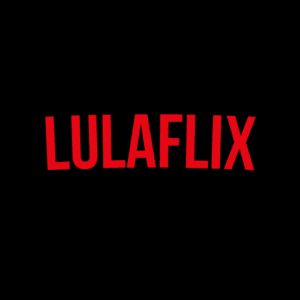
By Fernanda Alcântara
From the MST web site
Currently, more than 40,000 Palestinians have been murdered, of which 70% are women and children. Faced with the genocide carried out by Israel in Gaza, coupled with advanced ethnic cleansing in the West Bank region, the Landless Rural Workers Movement (MST) has spared no effort to join the global call for a ceasefire and the condemnation of Israel for its crimes against humanity.
At the same time, it is nothing new that art is a tool of political and social resistance. Used in the fight against oppression and for rights, art is part of our existence and muralism, in particular, is one of the forms of public and popular art that gained prominence in the 20th century, in the Mexican Revolution, having as one of its main aims to bring art to the people, transforming it into a means of education and political awareness.
A relevant form of resistance art, the muralist movement has since been used by social movements in different parts of the world to express their demands and criticize power structures. Faced with the countless human rights violations that have not just started in Palestine, the MST created the call for the “National Campaign of Murals for Free Palestine”.
The idea was that, through these murals, the genocide in Palestine would not be forgotten, and art could remember and honor the resistance against Zionist oppression and Palestinian cultural identity. By making the issue visible and accessible, muralists seek to mobilize the population and strengthen collective awareness about what is happening today.
MST activist, Igão de Nadai is part of the coordination of the Campaign and explains that the initiative began out of concern regarding the issue of Palestine, especially as a denunciation of the State of Israel and as an act of solidarity with the Palestinian people and their resistance . “It is important to highlight our solidarity with the resistance taking place there.”
According to Igão, there is an international graffiti movement, especially among muralists, which is very strong in other countries, mainly in Europe, and he added that this movement is marked by many denunciations against the State of Israel and the commercial agreements between the countries.
“In Brazil, this type of initiative was happening very slowly, we hardly saw this type of demonstration. So, we decided to take a local initiative and, initially, it was something small, that a colleague from Rio Grande do Sul and I planned to do. However, we decided to invest in a national call, calling on artists to get involved.”
Some artists who are not part of the MST also answered the call, especially in São Paulo, where more than 14 artists are already involved in the activities, with emphasis on women who are also participating in this work in the capital. The arts in the capital were developed in the region of Avenida Paulista/Consolação, Elevado Costa e Silva/Minhocão, CDC Vento Leste, Patriarca and the Tatuapé neighborhood.
“One of the highlights is a work being carried out in the heart of São Paulo, on the gable of a building — those giant murals that exist in the city. An urban occupation is being carried out there, including with the help of a Palestinian. This process is quite time-consuming, but it will be one of the highlights of our campaign, as the city is both a center of Zionism and a place with a large presence of Palestinians. This mural will be in a highly visible space, apparently close to Avenida Paulista.”
And this Zionism can be seen up close. On the first Sunday of August (4), the artist Kleber Pagu and other artists were developing the work, a work measuring almost 400 m², when a man invaded the place, and in addition to kicking paint and other equipment, causing material damage, he also attacked the team involved and put one of the artists at risk by pulling the safety ropes that kept him hanging about 20 meters in the air. The MST issued a statement about what happened.
And so, against hatred, the campaign was built, which even ending on August 11, continues to reach the walls of the entire country, with the right to intervention and murals even in Venezuela. “The idea was to make artistic interventions in any collective space, whether in the countryside, in the city, in schools, in short, in any type of space, as a way of denouncing and announcing the fight for a free and sovereign Palestine.”
In addition to the capital of São Paulo, in São Paulo there was also intervention in the city of São José do Rio Preto; In Piauí, in the Lisbon settlement, in São João do Piauí; In Ceará, at the Frei Humberto Costa Training Center, in Fortaleza; In Paraná, in the Chico Mendes Community, in Matelândia, and in the Vista Bela neighborhood, Londrina; In Rio Grande do Sul, in the José Marti Cultural Association Auditorium, in Porto Alegre, and in the city of São Gabriel; In Sergipe, in the capital Aracaju; In Minas Gerais, in the Estrela do Norte settlement, in Montes Claros.
“We set a week for the actions, but, interestingly, other artists and activists joined throughout this period, becoming interested in the movement. As a result, we will have work being carried out until next week. We decided not to end the campaign on the initially stipulated date, allowing it to continue. Until next week, we already have some confirmed work, including one in Venezuela, which will be very significant.”

